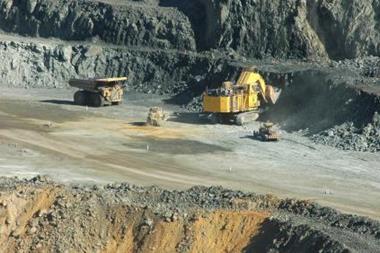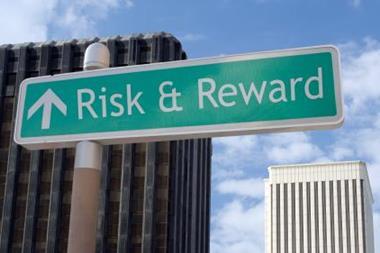There has been a growing debate over the past few years about how relevant biodiversity is to business, and what companies might be expected to do about such a long-term and often intangible environmental issue.
In response to this, ISIS Asset Management has published a 55-page report entitled Is biodiversity a material risk for companies? An assessment of the exposure of FTSE sectors to biodiversity risk. The report's headline conclusions are that:
- Biodiversity presents material risks to companies in which ISIS invests, although putting a financial value on such risks is often not possible
- Poor understanding or management of biodiversity risks by companies should be of concern to investors where the risks are likely to be material
- Companies that have a significant relationship with biodiversity, or potentially material risks, should 'start investigating and managing biodiversity-related risks now'.
The report finds that around two-thirds of FTSE 100 companies in high-risk sectors are not taking substantive or consistent action to manage their biodiversity-related risks, and makes a series of recommendations about how they can improve their practices.
Why investors are interested
Investor attention to biodiversity has hitherto largely been focused on the extractive industries and utilities, on the assumption that these are the sectors where biodiversity risks are most likely to be material(1).
However, an increasing number of companies, in a widening range of sectors, are considering and reporting on their biodiversity impacts and associated risks. The report reviews the growing evidence to suggest that biodiversity risks are relevant to companies in other sectors. It includes case studies from the retail, construction, food producer and banking sectors.
This is the second report on biodiversity this year published by ISIS, and is based on a research project commissioned from Earthwatch Institute (Europe), and supported by the Department for International Development.
It views the debate through the lens of one of the City's largest institutional investors(2), and places biodiversity-related issues within the context of risk management and materiality.
The report's objectives are:
- To identify the business sectors in which the relationship between companies and biodiversity is most likely to lead to material risks
- To identify the sources of biodiversity-related risk that businesses need to take into account as part of their planning and management processes
- To identify which sectors and companies are most at risk, due to lack of awareness and management of biodiversity issues
- To provide recommendations for action by companies - especially concerning the need for consideration of biodiversity in a company's operating and financial review (OFR).
In common with other work by ISIS on social, environmental and ethical risks, the overall aim is to establish whether this is an issue which can affect shareholder value. This enables ISIS to judge whether it can reduce its portfolio risks by actively engaging the companies in which it invests to promote improved management practices.
How do you define biodiversity?
In many ways, biodiversity is an unhelpful term. It is used by the scientific community to describe the number of species, abundance of populations and genetic variety within species, but it has also become short-hand for policy makers and conservationists to describe the importance of ecosystems and the efforts made to conserve ecosystems.
The term 'biodiversity' has been used in the report because it has been widely used by policy makers - for example in the title 'Convention on Biological Diversity' and the 'UK Biodiversity Action Plan'. However, ISIS recognises that the focus of its report, and the relevance of biodiversity to most companies, lies in the wider sense of ecosystem services, management and conservation - while emphasising that the term can still be useful for companies in public reporting.
Seven key risks
To clarify the terminology, ISIS has identified seven categories of biodiversity-related risk, which break down the concept of biodiversity into management categories that are more familiar to companies and investors. Each of these risks is analysed sector by sector, with tables giving actual and hypothetical examples of how such risks may be material.
The seven key risk areas are:
- ACCESS TO LAND Example: Access to new sites is affected by a company's track record on protecting/restoring biodiversity and water resources
- REPUTATION(3) Example: A campaign over an issue such as genetically modified organisms or dolphin-friendly tuna, reduces consumer confidence in a brand or company, resulting in lower sales
- ACCESS TO CAPITAL Example: Environmental credit risk is assessed as high, due to a company's poor biodiversity track record or management plans, and cost of capital increases
- ACCESS TO MARKETS Example: Inability to meet specifications from substantial buyers for sustainably-sourced raw materials such as timber, restricts access to a major market
- SECURITY OF SUPPLY Example: Reduction in the quality or availability of essential materials such as fish
- RELATIONS WITH REGULATORS Example: Concerns about a company's track record on biodiversity management, or lack of confidence in the quality of its biodiversity plans, lead to permit delays or fines
- LIABILITIES Example: Unforeseen impacts of activities on biodiversity lead to financial liability even though a company's regulatory licences have not been exceeded.
Business and biodiversity
The relationship between business and biodiversity is complex, and often embedded in other risk-related issues. One of the confusions about the terminology has been that the value of biodiversity to many companies does not usually relate to the existence of individual species per se.
Rather, it is the economic value of natural or 'ecosystem' services that are sustained through the complex interaction between many species, that has long been integral to economic success, and is now at risk from growing biodiversity loss.
There is a wide range of such ecosystem services on which people, companies and the global economy rely. The total global value of ecosystem services has been estimated at $33trn per annum(4). Examples of ecosystem services are: the natural purification of water supplies and creation of drainage systems; moderation of floods, droughts and temperature extremes; generation and renewal of soil fertility; prevention of soil erosion and nutrient cycling.
It is also important to understand that companies have a two-way relationship with biodiversity, encompassing both the impact of companies on biodiversity, and the impact of biodiversity on companies. Indeed, the report notes that:
- Companies can have both direct and indirect impacts on biodiversity
- Some companies are dependent on biodiversity, in the form of natural products or ecosystem services. This makes them potentially vulnerable to the mismanagement of biodiversity by others
- Each of these factors can lead to risks to business.
Increasing significance
It is likely that biodiversity-related risks will become more acute and more widespread across all sectors, as biodiversity rises up the agenda as an environmental and public policy issue. Among the factors that are likely to increase biodiversity risks are:
- Continued, and probably increasing, loss of global biodiversity: recent research predicts that this will happen as a result of a range of factors including climate change(5)
- Increased costs or uncertainty for companies dependent on ecosystem services as a result of continued biodiversity loss
- Greater understanding of biodiversity as a factor in credit risk by lending institutions
- Legislation to make companies responsible for their biodiversity impacts: trends are towards increased use of regulation and other mechanisms to link biodiversity impacts back to the companies responsible for them.
Possible mechanisms include:
- A wider definition of biodiversity under the EU environmental liabilities regime(6)
- Biodiversity levies, which may be introduced to make companies pay for biodiversity impacts, similar to the way this has been done in other fields, for example waste management and energy use
- Increasing scrutiny of supply chain practices and impacts by government and commercial customers, as well as pressure groups.
The OFR
Current proposals for forthcoming regulation in the UK will require all quoted companies to produce an OFR(7). In this report, directors will be required to report on environmental and other issues, 'both where they constitute a significant external risk to the company, and where the company's impact on others through its activities, products or services, may affect its performance'(8).
The Government's draft guidance to the OFR gives examples of information that could be necessary for shareholders to make an informed assessment of the business. Among them are two of particular relevance to biodiversity(9):
- '...how a company that is a heavy user of natural resources which may become scarce, or the price of which may change significantly, is intending to reduce its dependency on such resources'
- '...an explanation of the risk management approaches employed by a company to assess the operational impact on biodiversity, where failure to avoid or mitigate damage would put development consents at risk.'
The next climate change?
An interesting parallel to the issue of biodiversity is climate change - another issue that combines economic, social and environmental impacts, and in which companies can be seen as both contributors to, and victims of, the problem.
In the words of Tom Massey, environmental regulation manager, RWE npower: "Fifteen years ago, companies were saying that climate change was not relevant to business. You could not measure it, companies had no individual responsibility for it, and there were no global regulations to control it. Many companies argued it was not happening at all. Scientific evidence and government action have fundamentally changed this view. I believe that the issue of biodiversity could well take the same path."
At present, governments, the scientific community and civil society have identified biodiversity loss as a major issue to be addressed, but few companies can clearly see how this will directly affect their own business.
If biodiversity follows the same path as climate change, we can expect to see more mechanisms put into place by regulators, which will impose the economic costs of biodiversity impacts on business - in much the same way that climate change has been linked to business use of energy by taxes and emission trading.
High-risk sectors - the 'red zone'
Following a survey of experts in the area of business and biodiversity, a review of companies and industry bodies already active in this area, and a review of the activities of NGOs and pressure groups, the report identifies nine sectors as high risk. These sectors are described as the 'red zone', indicating that most companies in them will be exposed to biodiversity risks, and that those risks are likely to be significant.
RED ZONE: HIGH-RISK SECTORS
CONSTRUCTION & BUILDING MATERIALS
ELECTRICITY
FOOD & DRUG RETAILERS
FOOD PRODUCERS & PROCESSORS
FORESTRY & PAPER
LEISURE AND HOTELS
MINING
OIL & GAS
UTILITIES
However, the report goes on to discuss at length the fact that individual companies in other sectors may carry the same level of risk as 'red-zone' companies. For example, a general retailer with a large food division may find that it has the same levels of risk as a food retailer. In order to help individual companies identify whether they are high risk, the report lists a series of business characteristics that may lead a company to face significant biodiversity-related risks. Examples of these characteristics are:
- Dependency on access to specific areas of land or water
- Involvement in infrastructure development
- Companies that are operating in or sourcing from developing countries which are themselves rich in biodiversity or have poor biodiversity protection.
How well are companies doing?
Although entire sectors may be categorised as high risk, individual companies can mitigate this risk. The report notes that exposure to biodiversity risks can be mitigated, first by the extent to which the risks are recognised and, second, by the extent to which they are properly managed.
The report contains an assessment of how effectively and consistently individual FTSE 100 companies in the red zone sectors are managing biodiversity-related risks.This assessment finds that a significant majority of 61% of FTSE 100 companies in the red zone sectors are not managing, or not taking substantive action to manage, their biodiversity risks effectively.
In addition, through an overlay of the responses to Business in the Environment's biodiversity section on the red zone companies, four sectors have been identified as being particularly at risk. This is based on the assumption that effective risk mitigation begins with proper identification and assessment of risks. The four red zone sectors cited as facing elevated levels of unmanaged risk are:
- Construction and building materials
- Food producers and processors
- Forestry and paper
- Leisure and hotels.
However, the report also notes that a small number of companies across all sectors have developed good understanding and management in the area of biodiversity. Examples are found in a series of case studies, and include companies such as Marks & Spencer, Rio Tinto, Travis Perkins, Unilever, Carillion, Barclays and BP.
How can companies do better?
ISIS's intention in publishing the report has been to encourage better biodiversity risk management by companies, in the belief that this will reduce its own risk exposure as an investor. The report therefore concludes with recommendations about how companies can manage and reduce their risks.
These are summarised as follows.
- All companies potentially exposed to high levels of biodiversity risk should assess if these risks are material to their business.
- Companies with material or potentially material biodiversity risks should develop and publish specific policies or statements recognising the significance of the relationship between biodiversity and their business.
- Having identified material risks, companies should put in place measures to manage them. The risks include: those arising directly from activities of the company, those arising indirectly from activities of the company, including supply chains and the impact of secondary development, and those that may threaten their business as a result of the mismanagement of biodiversity by others.
- Management of biodiversity should be integrated with the company's pre-existing risk management systems and should set performance targets.
- Companies exposed or potentially exposed to high levels of biodiversity risk should report on their management of biodiversity.
Is biodiversity a material risk?
The report's unambiguous conclusion is that biodiversity does present material risks to many companies, although putting a precise financial value on such risks is seldom possible. Where such values can be ascribed, they are often significant.
However, the majority of companies analysed in the red zone sectors are not taking substantive action to manage their biodiversity risks effectively.
The long-term nature of biodiversity risks means that it can take an unusually long time to fully identify and understand them. Moreover, it is not easy to take rapid action to mitigate them once they have been identified.
This means that companies with potential risk exposure cannot assume that action can be postponed. The report concludes with a very clear message for companies in which ISIS invests: 'This report should serve as an early warning to companies, particularly those in our red zone: start investigating and managing biodiversity-related risks now.'
References: 1) Are Extractive Companies Compatible with Biodiversity? (ISIS Asset Management, London, 2004); Protecting Stakeholder and Natural Value (Insight Investment, London. 2004)
2) £62.6bn of funds under management as at 31-8-04; as from October 2004, ISIS Asset Management has merged with F&C and the new company is known as F&C Asset Management
3) 'Reputation' is used is this study to refer to risks that may affect the relationship of the company with individual stakeholders
4) 'The value of the world 's ecosystem services and natural capital' (Constanza et al, Nature 387, 1997]
5) 'Extinction risk from climate change' (Thomas et al, Nature 427, 2004]
6) 'Where there's brass...' (Neil Hodge, Financial Management, Sept. 2004)
7) Draft Regulations on the Operating and Financial Review and Directors' Report. A consultative document. (May 2004, p.23) See 8) Ibid (draft regulations on OFR)
9) Ibid (draft regulations on OFR)
Copies of 'Is biodiversity a material risk for companies?' can be obtained from the Governance & Socially Responsible Investment unit at ISIS Asset Management, 100 Wood Street, London EC2V 7AN, e-mail eve.crush@isisam.com
Robert Barrington is director of governance & socially responsible investment, ISIS Asset Management, Tel: 020 7506 1216, E-mail: Robert.Barrington@isisam.com
(ISIS Asset Management is regulated by the Financial Services Authority.
All sources are taken from ISIS Asset Management unless otherwise stated.)



















